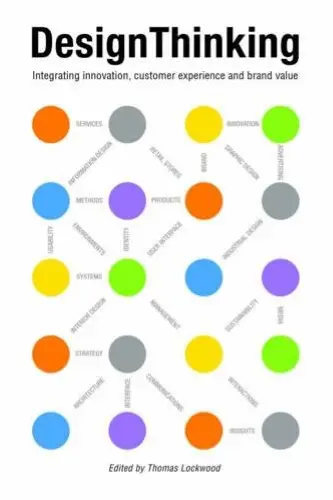Design Thinking
Book Author: Thomas Lockwood
Summary reviewed by:
Terrence Timmons
Terrence Timmons
Analyst
Bachelor of Arts (BA), University Of California, Santa Barbara 2019
With over 4 years of experience as an analyst. Terrence Timmons is committed to analyzing summaries without compromising on quality.
Design Thinking: Summary
Learn the secret to groundbreaking innovation and reshape the world! In "Design Thinking: Integrating Innovation, Customer Experience, and Brand Value," Thomas Lockwood, in collaboration with various experts, delves deep into the transformative power of design thinking in the modern era. The book elucidates how contemporary design and product development strategies have evolved to adapt to our ever-changing environment.
Gone are the days when projects were initiated by marketers and then handed over to designers. Instead, today's designers are at the forefront, not just styling products but strategically designing experiences, services, and even business models. They're addressing some of the most pressing societal challenges, from climate change to rapid urbanization. At its heart, "Design Thinking" is a human-centric innovation process that prioritizes observation, collaboration, rapid learning, and visualization of ideas.
It's about swiftly prototyping concepts while simultaneously analyzing their potential business impact. Lockwood emphasizes that this new way of thinking hinges on a meticulous understanding of consumer needs, collaborative envisioning of alternative solutions, and swift prototyping of emerging concepts. The ultimate goal? To craft captivating customer experiences and drive business growth. In essence, if you wish to remain relevant in today's dynamic world, embracing this innovative approach is not just beneficial—it's imperative.
Design Thinking: Genres
Non-fiction
Business & Economics,
Design Thinking
Innovation
Brand Building
Customer Experience
Design Thinking: Themes
Human-Centric Innovation: The book emphasizes the importance of placing humans at the center of the innovation process. By observing and understanding consumer needs, businesses can craft solutions that resonate deeply.
Collaboration: Collaboration, especially between designers and other stakeholders, is vital. It ensures a holistic approach to problem-solving, drawing from diverse perspectives and expertise.
Rapid Prototyping: Instead of spending extensive time in the ideation phase, the book advocates for quickly bringing ideas to life. This allows for immediate feedback and iterative improvements.
Visualization of Ideas: Before an idea can be realized, it must be visualized. This helps in aligning teams, getting stakeholder buy-in, and refining the concept.
Strategic Reframing: Sometimes, the biggest societal challenges don’t require monumental solutions. They simply need a fresh perspective or “reframing.” This theme encourages readers to look at problems differently, opening the door to innovative solutions.
Adaptation in a Changing World: The world is evolving, and so must our design and innovation processes. The book underscores the importance of staying agile and receptive to change.


Design Thinking
Date Published: November 10, 2009
Disclaimer: As an Amazon Associate I earn from qualifying purchases.




